Swan Lake
Q&A: 4 Ballerinas On What It’s Like to Be Swan Queen
 In the classical ballet Swan Lake, the ballerina’s dual role of Odette/Odile, commonly referred to as White Swan/Black Swan, is one of the most iconic in the repertoire, demanding technical mastery and emotional range to morph from vulnerable and pure Odette to audacious and deceptive Odile. Thematically, these polar-opposite personalities symbolize a battle between good and evil. Choreographically, they also contrast. Odette is fluid and ethereal with the delicate carriage and rippling swan arms that are a signature of the ballet. Odile is virtuosic, demanding attention with a series of heart-pumping jumps and turns, including the famous 32 fouettes of Act 3.
In the classical ballet Swan Lake, the ballerina’s dual role of Odette/Odile, commonly referred to as White Swan/Black Swan, is one of the most iconic in the repertoire, demanding technical mastery and emotional range to morph from vulnerable and pure Odette to audacious and deceptive Odile. Thematically, these polar-opposite personalities symbolize a battle between good and evil. Choreographically, they also contrast. Odette is fluid and ethereal with the delicate carriage and rippling swan arms that are a signature of the ballet. Odile is virtuosic, demanding attention with a series of heart-pumping jumps and turns, including the famous 32 fouettes of Act 3.
Here, PBT’s four principal ballerinas and Swan Queens — Amanda Cochrane, Hannah Carter, Julia Erickson and Alexandra Kochis — share insights on portraying two complex characters in one production.
Describe what makes Odette’s technique unique. How do you make it your own?
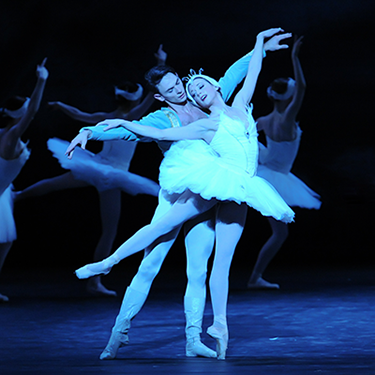
AC: I find one of the most wonderful things about being Odette and Odile is that you have so much room to play with port de bras and the musicality. I like to experiment with different arm movements, and I try to make each rehearsal slightly different, whether I’m exploring the music or just holding a balance a second longer. This allows me to discover what feels natural and expand on things that work for me as an artist/dancer.
HC: Odette’s technique, along with the corps de ballet of swans, uniqueness comes mainly from her port de bras, the way she uses her arms. They are our wings and we try our best to make them look that way.
JE: It diverges from classical, rounded ballet port de bras shapes, because you’re portraying a swan with the swan arms. You need all the carriage of classical ballet technique but then you kind of flip the hand. The beauty of Odette’s technique is that it’s very fluid. You’re able to play a lot more than with your average classical ballet role, so that is very fun. It’s all about length and expression and covering space.
AK: Dancing the role of Odette is classical vocabulary, extrapolated. You are extending a pointed toe but only to better probe the waters. You are raising your arms and inclining your head but with the purpose of unfurling your wings and preening your feathers. The role gives meaning to the movements.
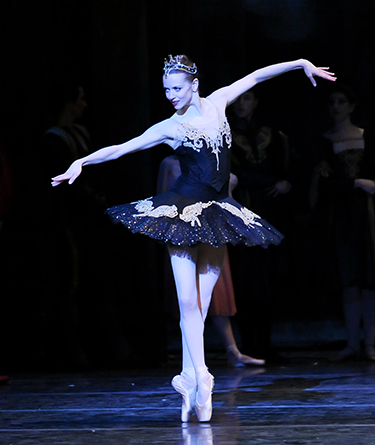
How do you switch gears from vulnerable Odette to audacious Odile? Describe your interpretation of each character.
AC: Odette and Odile are such polar opposites, I feel like I have to flip an internal switch when I bounce back and forth between the two roles. I approach Odette with a feeling of longing and desire. I try to give her backstory a wounded innocence with a hint of a wild creature, all behind the queenly authority that she has to protect her flock. I see Odette as a strong, enduring soul whose kindness and love triumph evil. Odile is a bit of a trickster. She has to be cunning and seductive without giving away her true identity. I try to give this role more spark and a commanding/alluring presence to deceive the prince. Odile is enthralled by the challenge of winning over Siegfried.
HC: The music and change of costume is going to be a big help for me in switching from Odette to Odile. Odette wears this beautiful white tutu and then Odile is a black tutu with gold lace trim on it that is just as beautiful in its own way. It makes you feel powerful and in charge with a sense of allure. The music does exactly the same thing.
JE: I definitely like to think about it as they’re these two archetypes…these are extremes and they’re portrayed as such. Odile is just the black mirror version of Odette — if you were to take Odette in all her innocence and beauty and purity and flip it on its head. With Odette, I think we’ve all felt those vulnerabilities of being seemingly lost, our hearts breaking, we feel there’s no hope and then this incredible thing happens and you feel so alive. That’s such a magical thing. Everyone’s felt that – probably too few times in our lives. It’s beautiful in its tragedy and also in its hope. And then Odile is so much fun because basically you’re a trickster. You get to really run the show and plot. Everything is working in your favor. Odile is so confident that she’s just in the flow. The cards are falling exactly how they’re supposed to.
AK: Tchaikovsky’s music drives my transformation. I only need hear the first few coursing notes of Odile’s entrance into the ballroom scene in the third act to feel like the powerful and scintillating seductress that she is in my mind. These characters live in each of us – the two sides of a coin, the yin and the yang. The fun part of dancing this role is getting in touch with each of them as they exist in you and then giving them a voice.
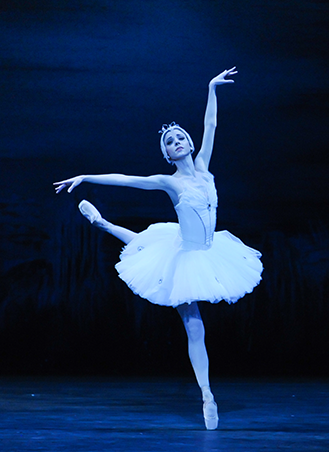
What makes this a bucket list (dual) role?
AC: I have a special place in my heart for Swan Lake. I have loved this ballet since I was young. This iconic score gives me chills down my spine every time I hear it. The technical challenges that come with these roles is something to be conquered and to be proud of when you’ve accomplished what you set out to do. This is a true prima ballerina role that is an honor to perform.
HC: I love dancing classical ballets, and Swan Lake is one of the most famous. I grew up watching the big names dancing roles like Odette/Odile and knew that’s what i wanted to do. I hope i can do it justice.
JE: I think it’s the incredible challenge of having to dance two characters and have two different levels of energy. To transition from Odette to Odile and back to Odette, to have the opportunity to conquer that challenge in an evening of ballet and take the audience on that ride with you, I think it’s a bucket list role because of that. It’s so fun because you have this beautiful freedom of expression. Everyone who’s danced it has danced it so differently…Your individuality really comes out, which is wonderful.
AK: Within the classical lexicon, the role of Odette/Odile is regarded as a pinnacle of both dramatic and technical prowess. To dance it is to go beyond yourself to a realm of suspended disbelief – where sorcerers do exist and it is possible for a prince to fall in love with a swan queen.
What makes Swan Lake special to you?
AC: Just having the opportunity to be onstage performing this beloved role makes this a special show for me.
HC: I’ve danced the corps de ballet of swan lake many times and have been fortunate enough to dance in different productions with different companies. It’s going to be a new experience and a new challenge dancing this role.
JE: I saw Pacific Northwest Ballet do Swan Lake back when I was a little kid. I was in the front row. I remember being just floored by how beautiful it was. Later in high school…I got the CD and I used to listen to it in my car b/c (the music is) just so compellingly beautiful. This will be my sixth full-length Swan Lake, and it was really my first full-length ballet. I remember being on the journey of my first Swan Lake performance and how it opened me up and took my dancing to another level. I feel like everytime I dance it it does the same thing.
AK: Throughout my career Swan Lake has been a frequent visitor. I have danced many roles, from the corps de ballet on up to Odette/Odile, and had the honor of watching so many beautiful artists make it their own. It is an incredibly special process to take all of this knowledge that you possess at this particular time in your life and assemble it into a unique version of the Swan Queen.
The Story of Swan Lake
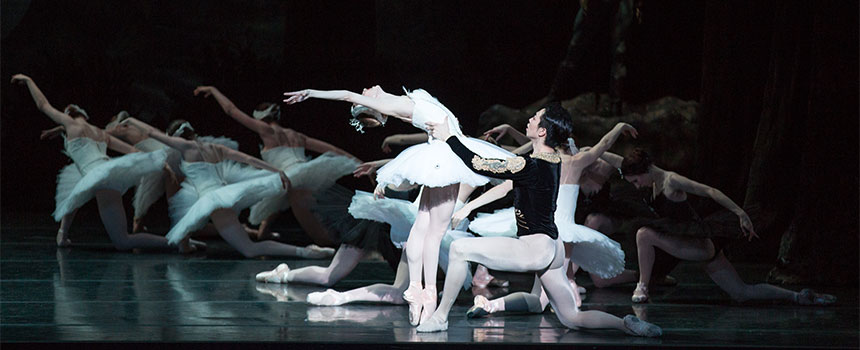
Swan Lake is arguably the most famous ballet of all time. Have you heard of Swan Lake, but don’t know the story line? Here it is in a nutshell…
Prince Siegfried is celebrating his 21st birthday. His Queen Mother presents him with a new crossbow…and a wake up call. It’s nearly time to choose a bride from one of six eligible princesses. It seems like the perfect time to escape to a hunting party with his BFF, Benno, and the rest of his friends.

Boy meets…swan. It’s after dark and, as Siegfried approaches a moonlit lake, he sights a majestic swan in flight. He takes aim…but the bird becomes a beautiful maiden, who implores him to lower his weapon. For Siegfried and Odette, it’s love at first sight. But this budding romance comes with some baggage.
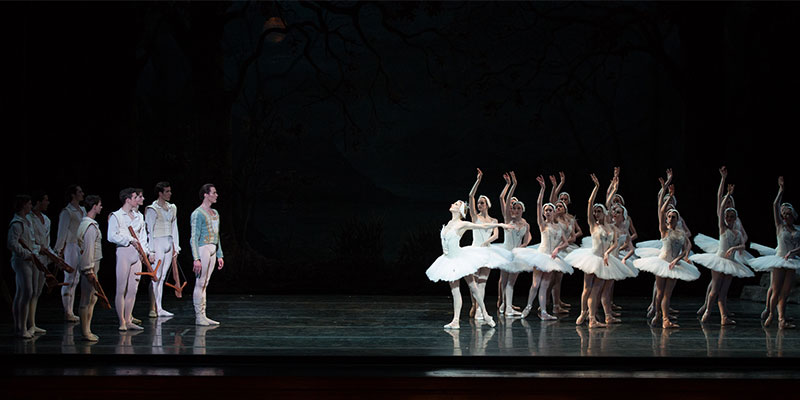
Cursed from the start. Unfortunately, Odette has met an evil sorcerer first. The vindictive Von Rothbart has cursed Odette, trapping her in the body of a swan. Although she reassumes her human form by night, it will take a pledge of true love to break the spell once and for all.

A wolf in sheep’s clothing. Siegfried has made up his mind to swear his love for Odette, but he hasn’t envisioned the sabotage to come. Back home in the castle, guests — including the princesses — gather for his birthday ball. The Queen Mother pressures Siegfried to choose a bride, but he refuses. Who should waltz in but Von Rothbart and his daughter Odile (!), the spitting image of his beloved Odette…
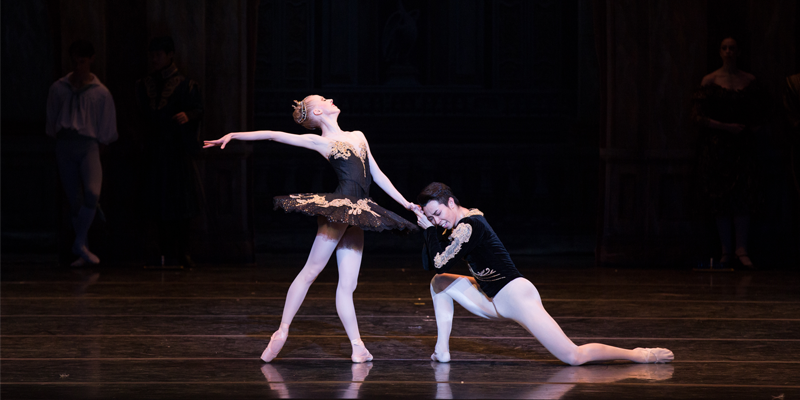
The Ultimate Deception. Odile dazzles him with her vibrance (and her 32 fouettés) and deceives him into declaring his love to the wrong woman. As Prince Siegfried swears his fidelity, he sees a fleeting vision of Odette, realizing with horror that he’s mistaken his love for her evil twin.
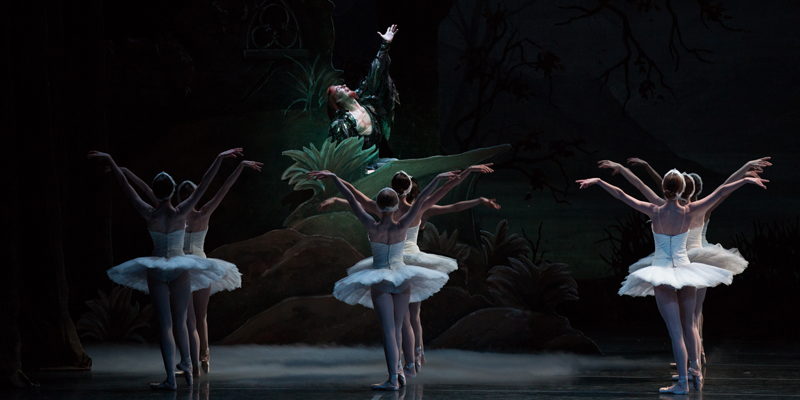
Will good or evil prevail? No spoilers here. You’ll just have to see to find out.
Swan Lake with the PBT Orchestra runs Feb. 16-25, at the Benedum Center. Find your seats here.
4 Valentine’s Day Gift Ideas
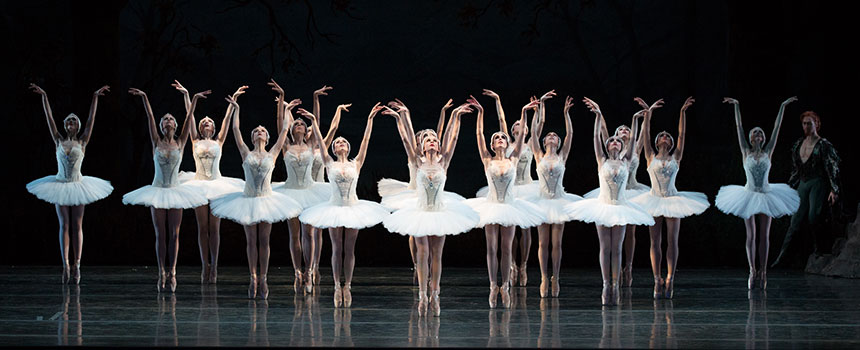
Valentine’s Day Gift Guide
Valentine’s Day is just a few weeks away, Pittsburgh! Here are four ideas to help you plan the perfect Pittsburgh date night and the ultimate gift from the heart. Give a gift that…
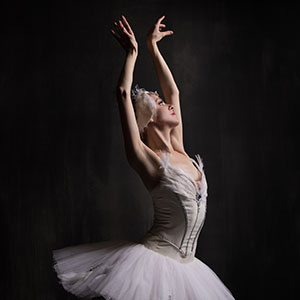 Inspires
Inspires
Plan the perfect date with tickets to Pittsburgh Ballet Theatre’s Feb. 16-25, production of Swan Lake, ballet’s greatest love story. Dress up, dine out and get lost in this classic story of good versus evil.
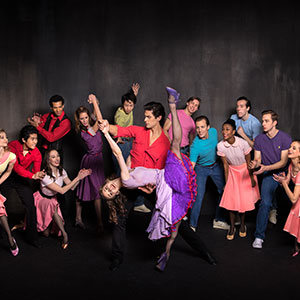 Keeps Giving
Keeps Giving
Or, make that three dates to anticipate! Create a three-ballet package featuring Swan Lake, PBT: New Works and UPMC Presents West Side Story Suite + In the Night + Fancy Free for as little as $81. Plus, your love will eat up these VIP perks.
 Moves
Moves
Treat the dancer lover in your life to classes at PBT Studios! Sign them up for our Swan Lake workshop, where adult students will learn iconic choreography from the ballet. Or, consider a class pass for PBT Barre Fitness, Pilates and other Community Division dance fitness options.
 Gives Back
Gives Back
If your special person loves doing good, consider making an honorary gift to Pittsburgh Ballet Theatre to support extraordinary art in our city. Plus, when you donate in a loved one’s name, they can experience behind-the-scenes benefits.
Artistic Director Terrence S. Orr Reveals 17-18 Season Lineup
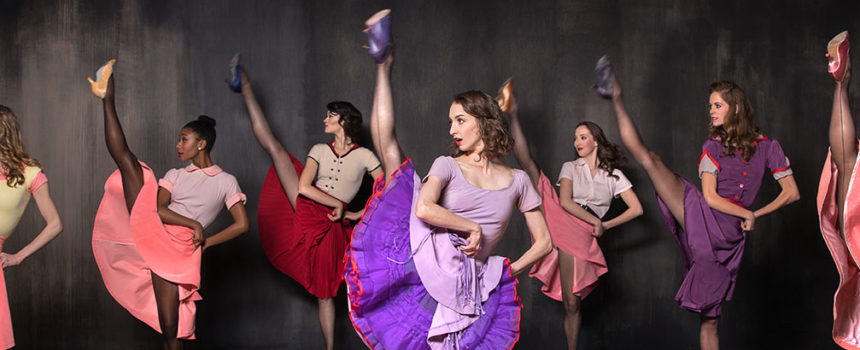
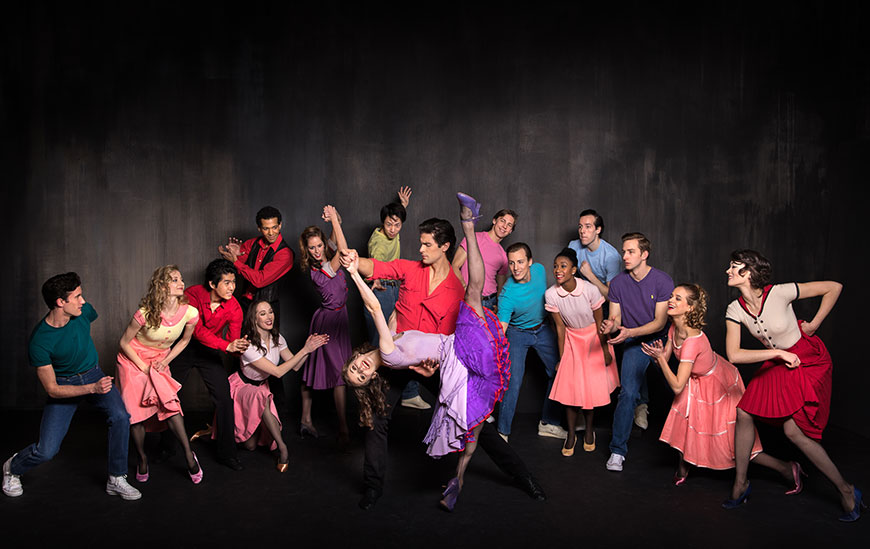
PBT’s 2017-2018 Season lineup features the return of “Swan Lake” and PBT’s debut in “West Side Story Suite”- presented by UPMC – just in time for the centennial celebrations of Jerome Robbins and Leonard Bernstein, who would celebrate their 100th birthdays in 2018.
The five-ballet season runs October 2017 through May 2018 and features: “Dracula;” “The Nutcracker;” “Swan Lake” with the PBT Orchestra; “PBT New Works,” a mixed repertory program at the August Wilson Center; and a season finale featuring Jerome Robbins’ “West Side Story Suite” and “In the Night,” also with the PBT Orchestra.
“This season is going to be a thrill and the timing, too, is great fun. We have ‘Dracula’ over Halloween weekend, ‘The Nutcracker’ to ring in the holidays and the great love story of ‘Swan Lake’ around Valentine’s Day,” said Terrence S. Orr, PBT artistic director. In March, we’ll give voice to emerging choreographers from our own company of dancers. And last but certainly not least is our tribute to the Robbins and Bernstein centennial celebrations with ‘West Side Story Suite’ – and ‘In the Night’ – a program that is going to show off the exceptional technique and acting of our dancers as well as some unexpected, and rarely heard, vocal talent.’”
Subscribe now for priority seating, exclusive benefits and savings over single ticket prices. Build your own three, four or five ballet package online here or by calling 412-454-9107.
SEASON LINEUP
“Dracula” – Oct. 27-29, 2017 at the Benedum Center
Choreographer: Ben Stevenson | Music: Franz Liszt | Costumes: Judanna Lynn | Lighting: Timothy Hunter | Set Design: Thomas Boyd | World Premiere: Houston Ballet, March 13, 1997 (originally created as a co-production between Houston Ballet and PBT)
Over Halloween weekend, PBT brings back the deliciously spine-chilling “Dracula,” based on Bram Stoker’s 1897 gothic novel – the grandfather of all vampire dramas. Dissatisfied with his bevy of undead brides, Count Dracula fixates on Svetlana, a young girl on the cusp of engagement, to satiate his thirst for fresh blood. A haunting score by Franz Liszt builds suspense while scenic designer Thomas Boyd’s fastidious studies of Balkan and Romanian architecture add authenticity to the 19th-century Transylvanian setting. The dancing also has teeth, with levitation, flying and pyrotechnics that make the choreography even more climactic. At the time of its premiere, the New York Times described it as a “spectacle of an order ballet audiences seldom see today.”
The Nutcracker – Dec. 1-27, 2017 at the Benedum Center
Choreography & Staging: Terrence S. Orr | Music: Peter Ilyich Tchaikovsky | Costumes & Scenic Design: Zack Brown | Lighting: Julie Duro | World Premiere: PBT, December 2002
“The Nutcracker” returns to the Benedum for 25 performances throughout December. Complete with flurrying snow, a colossal Christmas tree and magic tricks galore, this holiday spectacular features over 100 dancers, 210 costumes and Tchaikovsky’s exultant score. Since its 1892 premiere, this holiday tradition has grown into one of the best-known ballets of all time. PBT adds its own spin on the time and place with a turn-of-the-century setting incorporating Pittsburgh’s own landmarks, historical figures and personality. Each performance features a unique casting combination, giving regulars the chance to see a variety of dancers perform principal roles like Marie, the Nephew, the Sugar Plum Fairy and her Cavalier.
Swan Lake with the PBT Orchestra – Feb. 16-25, 2018 at the Benedum Center
Choreographer: Marius Petipa and Lev Ivanov | Music: Peter Ilyich Tchaikovsky | Costumes: Peter Farmer | World Premiere: Imperial Ballet, St. Petersburg, January 27, 1895
An evil enchantment and a mysterious love story give wings to a ballet that has captured the public imagination since 1895. Together with the live PBT Orchestra, PBT returns to “Swan Lake” for two weekends around Valentine’s Day. “Swan Lake” exemplifies classical technique – from the ballet en blanc swan scenes to the Black Swan’s famous 32 fouettés. But it’s the undulating port de bras of the swans – a movement quality unique to “Swan Lake” – that lends its own mystique to the classical vocabulary. Set to the stirring themes of Tchaikovsky’s score, the split personalities of Odette and Odile mirror the age-old battle between good and evil.
“Pittsburgh Ballet Theatre: New Works” – March 16-25, 2018 at the August Wilson Center
Choreography: Mixed repertory program of world premiere works by PBT dancers
PBT has built its repertory around an eclectic mix of classics, modern masterworks and new commissions from both seasoned and emerging choreographers. In March at the August Wilson Center, Artistic Director Terrence S. Orr will hand over the program to five choreographic voices from PBT’s own company of dancers: Amanda Cochrane, Julia Erickson, Yoshiaki Nakano, William Moore and Cooper Verona. Each choreographer will create a signature work on his or her fellow artists, offering audience members a personal, insightful look at the way today’s dancers interpret their own medium.
“UPMC Presents ‘West Side Story Suite’ + ‘In the Night’” with the PBT Orchestra – May 4-6, 2018 at the Benedum Center
“West Side Story”:
Choreography by: Jerome Robbins
Music by: Leonard Bernstein (“Prologue,” “Something’s Coming,” “Dance at the Gym,” “Cool,” “America,” “Rumble,” and “Somewhere Ballet,” from West Side Story, 1957)
Lyrics: Stephen Sondheim | Scenic Design: Oliver Smith | Costume Design: Irene Sharaff | Lighting Design: Jennifer Tipton | Premiere: May 18, 1995: New York City Ballet
“In the Night”:
Choreography by: Jerome Robbins
Music: Frédéric Chopin’s Nocturne Opus 27, No. 1 (1835); Nocturnes Opus 55, No. 1 and No. 2 (1843); Nocturne Opus 9, No. 2 (1830-1831) for solo piano | Premiere: January 29, 1970, New York City Ballet | Costumes by: Anthony Dowell | Lighting by: Jennifer Tipton
PBT’s season finale celebrates the 100th birthdays of Jerome Robbins and Leonard Bernstein, whose game-changing Broadway collaboration remains as relevant today as it was in 1957. “West Side Story Suite” samples classic songs and dances from the full-length musical and film. In this work, the dancers not only dance – they’ll sing excerpts from the famous Bernstein music and Stephen Sondheim lyrics. Tapping into the raw emotions that drove the full-length story, the dancers will take on the personas of Tony, Maria and the rival Jets and Sharks through the emotionally charged choreography that earned Robbins a Tony Award.
“West Side Story Suite” will share the program with another Robbins masterwork: his intimate 1940 work, “In the Night,” set to four Chopin nocturnes. With pas de deux for three couples, “In the Night” lifts the curtain on three very different relationships, exposing shades of love from tender to tumultuous.
